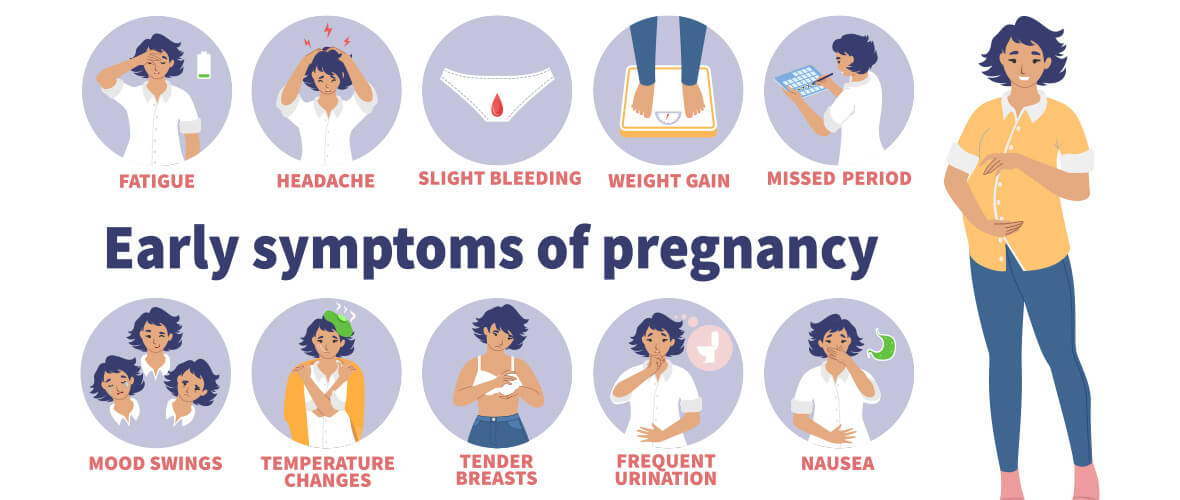Let’s First Look at How Pregnancy Happens
To understand how to get pregnant, you need to understand the processes that take place before nidation. To get pregnant ovulation must take place. This occurs when a mature egg is released from the ovary, pushed through the fallopian tube, and is available to the sperm for fertilization. The lining of the uterus has thickened to prepare for a fertilized egg. If conception does not occur, the uterine lining will be shed during menstruation, aka your period.
What You Need to Know About Ovulation:
- An egg lives 12-24 hours after leaving the ovary.
- Normally only one egg is released each time of ovulation.
- Ovulation can be affected by stress, illness, hormonal imbalances, travel, or significant changes in weight, exercise, or sleeping patterns.
- Some women may experience light spotting around ovulation.
- Implantation of a fertilized egg normally takes place 6-12 days after ovulation.
- Each woman is born with millions of immature eggs that are waiting to be released during ovulation.
- A menstrual period can occur even if a woman has not ovulated.
- Ovulation can occur even if a woman has not had her menstrual period.
- Some women feel a bit of pain or aching near the ovaries during ovulation called mittelschmerz, which means “middle pain” in German.
- If an egg is not fertilized, it disintegrates and is absorbed into the uterine lining.
How to Get Pregnant Faster
Know when you’re ovulating and having sex during your fertility window will increase your chances of conceiving. Use our free Ovulation Calendar to determine your most fertile times.
Use an Ovulation Tracker
A woman’s monthly cycle is measured from the first day of her menstrual period until the first day of her next period. On average, a woman’s cycle is between 28-32 days, although some women may have much shorter or longer cycles.
Most women ovulate anywhere between Day 11 – Day 21 of their cycle, counting from the first day of their last period (LMP). This is what many refer to as the “fertile time” of a woman’s cycle because sexual intercourse during this time increases the chance of pregnancy. Ovulation can occur at any point during this window and may occur on a different day each month.
Signs You’re Ovulating:
- Change in vaginal secretions. Just before ovulation, you may see an increase in clear, wet and stretchy vaginal secretions. Just after ovulation, cervical mucus decreases and becomes thicker, cloudy and less noticeable.
- Change in basal body temperature. Your basal body temperature (body’s temperature at rest) increases slightly during ovulation. Using a thermometer specifically designed to measure basal body temperature, take your temperature every morning before you get out of bed. Record the results and look for a pattern to emerge. You’ll be most fertile during the two to three days before your temperature rises. This is the best time to have sex.
Ovulation is one of the most important processes a woman should understand about her body as it is the determining factor in both getting pregnant and preventing pregnancy. Nonetheless, it can be somewhat difficult to understand.
Increase Your Chances of Getting Pregnant
- Have sex near the time of ovulation. Have sex every two to three days per week starting soon after the end of your period. This can help ensure that you have sex when you are most fertile.
- Maintain a normal weight. Overweight and underweight women are at increased risk of ovulation disorders.
- Fertility-friendly lubricants. Use lubes that are sperm and egg-friendly.
- Consider a supplement
- Don’t smoke. Tobacco has multiple negative effects on fertility, not to mention your general health and the health of a fetus. If you smoke, ask your health care provider to help you quit before conception.
- Don’t drink alcohol. Heavy alcohol use can decrease fertility. Avoid alcohol if you’re hoping to conceive.
- Cut caffeine. Research suggests that fertility isn’t affected by caffeine consumption of less than 200 milligrams a day. That’s about one to two cups of 6 to 8 ounces of coffee per day.
- Don’t overdo strenuous exercise. Strenuous, intense exercise of more than five hours a week has been associated with decreased ovulation.
Our Ultimate Fertility Resource Guide provides the information you need on fertility, tips on how to get pregnant faster, and how to boost fertility through sometimes simple tweaks to your lifestyle and approach. The guide is easy to read and meant for anybody wanting to increase their ability to conceive. It’s a free download and includes coupon codes for essential products. Even free Nightfood Nighttime Ice Cream.
How Long Does It Take to Get Pregnant?
With frequent unprotected sex, most healthy couples conceive within one year. Of all couples trying to conceive:
- 30 percent get pregnant within the first cycle (about one month).
- 60 percent get pregnant within three cycles (about three months).
- 80 percent get pregnant within six cycles (about six months).
- 85 percent get pregnant within 12 cycles (about one year).
- 92 percent get pregnant within 48 cycles (about four years).
Your best chances for conceiving naturally are during your 20s. Your fertility begins to decline as you age. A healthy 30-year-old has about a 20 percent chance of getting pregnant each month, but by the time you’re 40, you have only about a 5 percent chance. By age 45, very few women get pregnant naturally.
How Long Should We Try Before Getting Help?
If you and your partner are struggling to get pregnant, it’s possible one of you may have an issue. Often it’s immediately assumed that the woman is infertile, but infertility affects both men and women.
It’s Easy to Check His Sperm Count
According to the Journal of Human Reproductive Sciences, up to 40-50% of infertility in couples is linked to the male. One of the most common problems contributing to male infertility is low sperm count. You can check if your sperm count meets the threshold for fertility quickly, easily, and privately at home with SpermCheck Fertility. This FDA-cleared kit is available online or at your local retailer and is a product of DNA Diagnostics Center (DDC), a corporate sponsor of the American Pregnancy Association. SpermCheck is simple—like a home pregnancy test— and results are ready in minutes. Keep in mind that other fertility factors like sperm mobility and morphology are also important and should be checked by a healthcare professional.
If you’re younger than 35 and haven’t gotten pregnant after trying for a year, or you’re older than 35 and you’ve been trying for six months, it may be time to see a fertility specialist.
If you still have further questions regarding ovulation, we encourage you to talk with your healthcare provider or contact the American Pregnancy Association for more information. Being informed about how your body works can help you feel more in charge of your health.






